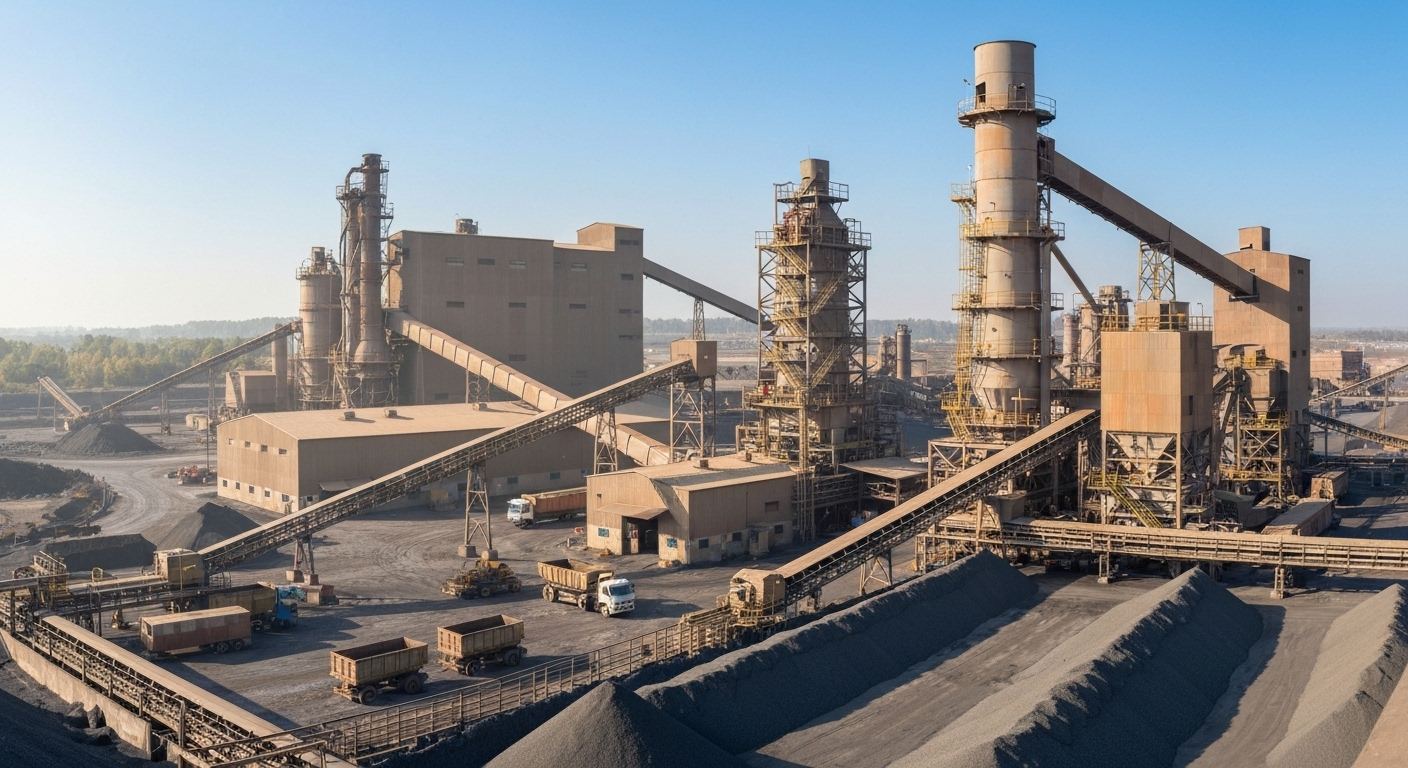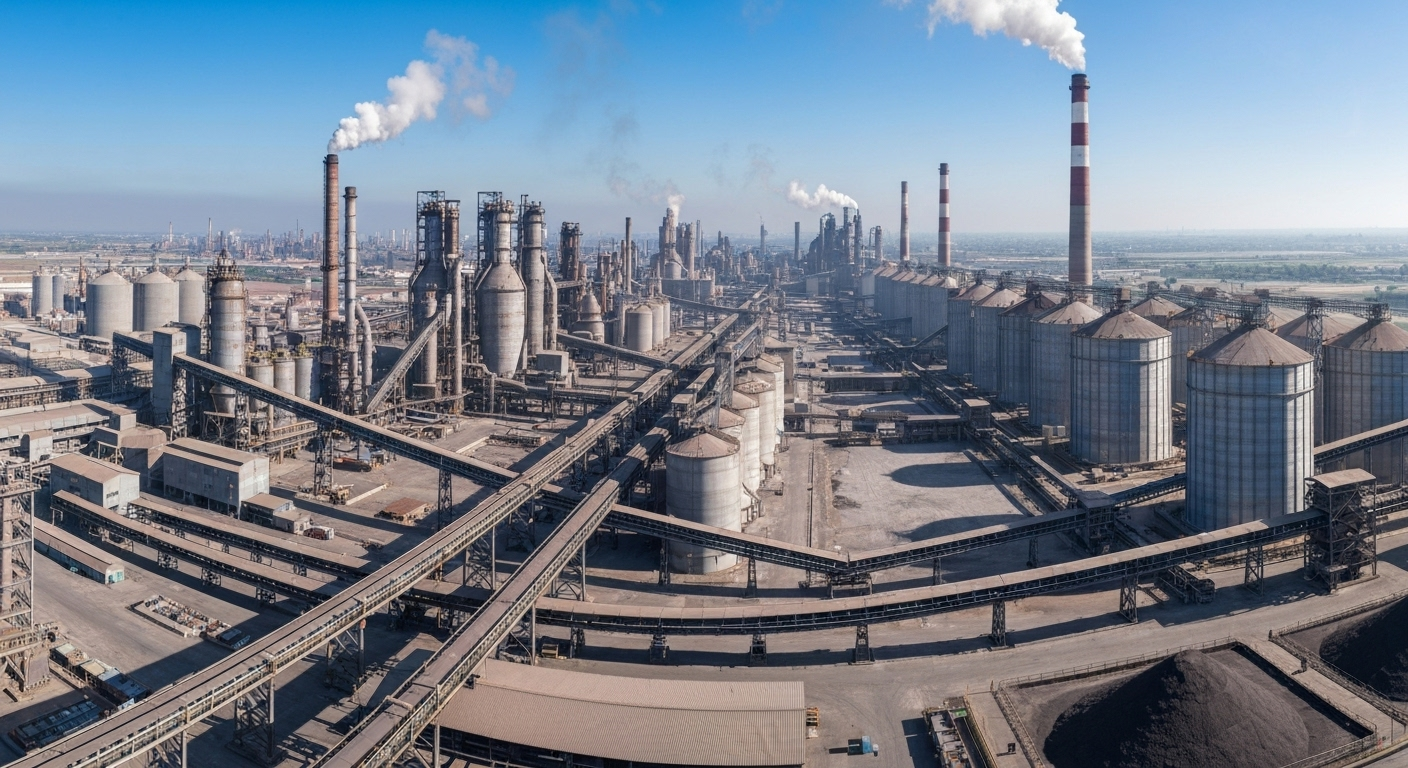The Future of Mineral Based Industries: What to Expect
Mineral based industries are the foundation of modern manufacturing and infrastructure, playing a pivotal role in global economies. These industries transform raw material extracted from the earth, such as mineral ores, into finished products or intermediate goods for other sectors. From the steel in your car to the cement in your home, their output is everywhere. Understanding their function is key to appreciating their impact on national growth and development, which we will explore further.
Understanding Mineral Based Industries in India

In India, mineral based industries are defined by their reliance on the country's rich geological deposits. The process begins with the extraction of mineral ores through mining, which are then processed into usable forms like metallic minerals.
These industries are pillars of the national economy, supporting everything from construction to heavy engineering. To better grasp their significance, it is helpful to distinguish them from other major industrial categories and understand their core operational characteristics.
Defining Mineral Based vs. Agro-Based Industries
What are mineral based industries and how do they differ from agro-based industries? The primary difference lies in their raw materials. Mineral based industries, like those in the HMTC Group, utilize minerals and ores, while agro-based industries depend on agricultural products like cotton or sugarcane.
This fundamental difference influences their entire structure. Mineral-based operations are capital-intensive, requiring massive investments in machinery and infrastructure. In contrast, agro-based enterprises often need less initial capital.
Ultimately, their contribution to the country’s economy is distinct. While an agro-based industry like a sugar mill is often seasonal and located near farms, a mineral-based one like a steel plant operates year-round and is typically situated near mining sites to reduce transportation costs.
Primary Characteristics of Mineral Based Industries
A defining feature of mineral based industries is their classification as a heavy industry. This is because both the raw material and the finished products are typically heavy and bulky, leading to significant transportation and logistical challenges.
These industries are intrinsically linked to the mining industry, which supplies the essential ores. They require sophisticated machinery for extraction, processing, and manufacturing, making them technology-driven and capital-intensive.
The scale of these operations is vast, demanding a consistent and large supply of energy and a skilled labor force. Their location is often strategically chosen to be near mineral deposits, energy sources, and transportation networks to ensure efficient production.
Key Types of Mineral Based Industries

The world of mineral based industries is diverse, with several key sectors forming the bedrock of industrial economies. These industries process different mineral ores to create a wide range of products essential for modern life.
Examples include the iron and steel industry, which uses iron ore; the aluminium industry, which relies on bauxite; and the cement industry, which processes limestone. Other critical sectors include the chemical industry and non-ferrous metal production. Each of these plays a unique and vital role.
Iron and Steel Sector
The iron and steel industry is often called the fundamental or backbone industry because its products are essential for almost every other sector. Heavy machinery, construction materials, and transportation equipment all depend on steel. The production and consumption of steel are widely considered an index of a nation's development.
To manufacture steel, key raw materials like iron ore, coking coal, and limestone are required in a specific ratio. The process is resource-intensive, which is why major steel plants are concentrated in mineral-rich regions like the Chotanagpur plateau, with hubs in Jamshedpur and Chhattisgarh.
This strategic location minimizes the cost of transporting bulky materials from mining sites to the plants. Companies like SAIL and TISCO are major players in India, driving industrial growth and infrastructure development across the country.
Aluminium and Non-Ferrous Metals
Following iron and steel, aluminium smelting is the second most significant metallurgical industry. Aluminium is prized for its unique properties: it is lightweight, resistant to corrosion, and a good conductor of heat and electricity. It is also malleable and becomes strong when alloyed with other metals.
The primary raw material for producing aluminium is bauxite, a bulky, reddish-colored rock. The process requires a reliable supply of electricity, making energy a critical factor for any aluminium smelter. Industries like NALCO and Hindalco are major producers.
Beyond aluminium, this category includes other vital non-ferrous metals like copper and zinc. These metals have gained popularity as substitutes for steel in various applications, from manufacturing aircraft and utensils to electrical wires and defense equipment.
Cement, Fertilizer, and Chemical Processing
The cement industry is fundamental to construction, using raw materials like limestone, silica, and gypsum to produce the binding agent for building homes, roads, and dams. Its output is a direct measure of a country's infrastructure development.
Similarly, the fertilizer industry supports agriculture by processing minerals like potash and phosphates. Although India is a major producer of nitrogenous fertilizers, it relies on imports for potash due to a lack of domestic reserves.
The chemical industry is another crucial sector that uses minerals to produce a vast range of products, from plastics to industrial chemicals. This industry is its own largest consumer, as its basic chemicals are used to manufacture more complex products for industrial and consumer markets.
Economic Impact and Importance
Why are mineral based industries important for the economy? Their contribution is immense and multi-faceted. As a heavy industry, this sector is a major driver of the country’s economy, significantly boosting the national GDP. It forms the base for infrastructure development, supplying essential materials for construction and manufacturing.
Furthermore, these industries hold vast export potential, bringing in foreign exchange and strengthening the nation's position in global markets. They are also a primary source of employment, creating opportunities across various skill levels.
Role in Job Creation and Regional Development
What role do mineral based industries play in job creation? They are significant employers, providing livelihoods to millions in both urban and rural areas. Since many plants are located near mineral deposits, they stimulate economic activity and regional development in otherwise remote regions.
These industries create a wide spectrum of jobs, from miners and engineers to factory workers and administrative staff. The establishment of a plant in an area often leads to the development of supporting infrastructure, including:
Roads and railways
Housing and schools
Healthcare facilities
Ancillary small-scale industries
This ripple effect uplifts entire communities. For example, mining activities in places like Khetri in Rajasthan or industrial zones in West Bengal have transformed local economies, providing stable employment and fostering growth far beyond the factory gates.
Contribution to GDP and Export Potential
The mineral-based sector is a powerhouse for a nation's GDP. Its output is a direct input for many other industries, creating a multiplier effect that amplifies its economic contribution. The value of processed minerals like steel and aluminium adds significantly to the national income.
India's strength in this sector also translates into substantial export potential. The country is a major global player in steel and aluminium production, exporting large quantities to international markets. For instance, India is the world's second-largest producer of crude steel.
This export capacity is vital for maintaining a healthy balance of trade. Below is a snapshot of India's position in the global steel market.
Metric | Detail |
|---|---|
Global Rank (Crude Steel) | 2nd largest producer (as of 2018) |
Sponge Iron | Largest producer in the world |
Per Capita Consumption | Low compared to the world average, indicating huge growth potential |
Largest Producer & Consumer | China holds the top spot for both production and consumption |
Essential Minerals for Industrial Growth
Industrial growth is directly tied to the availability of essential minerals. These mineral ores serve as the fundamental raw material for all mineral based industries. Without a steady and reliable supply of high-quality ores, production cannot be sustained.
The efficiency of processes like aluminium smelting, for example, depends entirely on access to bauxite and affordable energy. Therefore, identifying, securing, and efficiently utilizing key minerals is a prerequisite for any nation aiming for robust industrial expansion.
Most Commonly Used Minerals in India
What are the key minerals used by mineral based industries? India is endowed with a rich variety of minerals that fuel its industrial engine. These resources are the building blocks for everything from infrastructure to everyday consumer goods.
Among the most critical minerals is iron ore, the primary ingredient for the steel industry. Bauxite is equally vital as the raw material for aluminium production. Other significant minerals include limestone, which is essential for the cement industry, and zinc, which is used in galvanizing and alloys.
Some of the most commonly used minerals include:
Iron Ore: The foundation of the steel industry.
Bauxite: The main source of aluminium.
Limestone: A key component in cement manufacturing.
Silica: Used in various industrial processes, including glassmaking.
Influence of Extraction Methods on Industry Practices
How does the process of mineral extraction influence mineral based industries? The methods used for extraction, such as open-pit mining or underground drilling, have a profound impact on the entire value chain. These upstream activities determine the cost, quality, and availability of raw materials for downstream industries.
Efficient extraction minimizes waste and reduces the final cost of the product, making the industry more competitive. Conversely, challenges in extraction, such as difficult geography or low-grade ore, can increase costs and disrupt supply chains.
This influence extends to innovation and material science. When the extraction of a primary mineral becomes too costly or environmentally challenging, industries are driven to find a substitute. For instance, the high strength-to-weight ratio of titanium makes it a viable, albeit expensive, alternative to steel in specialized applications.
Conclusion
The future of mineral-based industries is poised for exciting developments, driven by innovation and growing demand. As we navigate through technological advancements and environmental considerations, it's crucial for stakeholders to stay informed about the evolving landscape. Understanding the key types of industries, their economic impact, and the essential minerals involved will empower businesses and professionals to make strategic decisions. Additionally, addressing challenges and adopting sustainable practices will be vital for long-term success. Embracing these insights can help you better position your organization for the future. If you're ready to explore opportunities in the mineral sector, get in touch for a free consultation with our experts.
FAQs
Understanding the nuances of mineral based industries can often raise several questions. Common queries include the role of metallic minerals in the steel industry and how raw materials like iron ore influence a country's economy. Many also wonder about the significance of aluminium smelting and its connection to heavy industries in states like Odisha and Rajasthan. Additionally, the environmental impact of mining and the extraction of materials such as gypsum and bauxite is frequently discussed, highlighting concerns about sustainability in global economies.
What are some profitable mineral based industries to consider in India?
Profitable mineral based industries in India include the iron and steel industry, which is foundational to all manufacturing. The cement, aluminium, and copper mining sectors also offer significant opportunities due to continuous demand from the construction and electronics industries.
How do mineral based industries affect the environment?
Mineral based industries can have significant environmental impacts. The extraction phase, involving mining and drilling, can lead to deforestation and habitat loss in rural areas. Processing activities, especially in the chemical industry and limestone quarrying, can cause air and water pollution.
What challenges are faced by mineral based industries today?
The mining industry faces numerous challenges, including high capital costs, irregular energy supply, and stringent regulatory hurdles. Difficult geography can complicate extraction, while the search for a viable substitute for certain metals puts pressure on industries like the smelter sector.
https://htmcgroup.blogspot.com/2025/08/strategic-market-positioning-for-talc.html
https://htmcgroup.blogspot.com/2025/08/htmc-group-premier-calcium-carbonate.html




Comments
Post a Comment